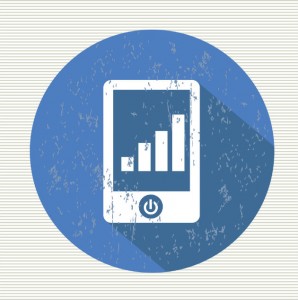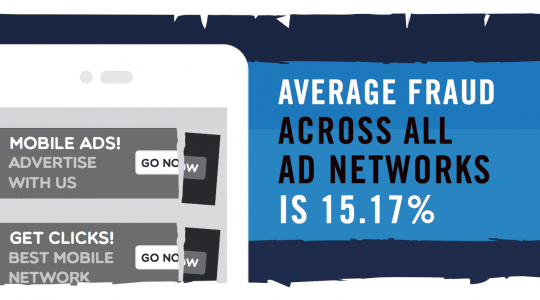When looking to reach positive return on investment (ROI) for your mobile app through performance based marketing, you should always keep one simple formula in mind:
ROI = ARPU/CPA
ARPU (Average Revenue Per User) is the average revenue that your app’s users generate over their lifetime, through whatever monetization method that is in place (most commonly it is either in-app purchase and/or ads inside the app).
CPA (Cost Per Acquisition) is the average direct cost to acquire a user that generates the above revenue. Since most networks sell users based on cost per install (CPI), then your CPA = CPI/CVR, meaning, the cost per install divided by the conversion rate from install to purchase. To reach positive returns on your marketing, all you have to do is to make sure that ARPU > CPA. However, as many app developers already understand, this is challenging.
So, how can you get there?
Segmentation
The above formulas use the average value for both ARPU and CPA. On the global average you may find it hard or impossible to reach positive ROI, however you might be able to find your profitability in a specific segment. For example, it might be the case that the ARPU you get from iOS users in Malaysia, divided by the CPA for these users, yields a much more favorable ratio compared to other such segments. This means that you should follow the profitability trail and target that segment.
The most common segments by which you should slice your numbers are: operating system, country, type of traffic, and source.
OS: iOS vs Android
In general, Android CPI rates are about 20-30% cheaper compared to iOS. The flip side is that iOS users are prone to spend more money, so they are worth more (higher ARPU), especially if you have in-app purchase options, but the same case is apparent for ad-revenues. The flip side, however, is that Android has a bigger market share, is growing faster, and in some countries represents over 80% of smartphones, so it is more scalable in many countries.
Geo Targeting
ARPU and CPI rates, for a free app, vary per country. In general, the pricing roughly correlates with the financial strength of the citizens of that country (GDPPC). There are no set rules and there are several additional parameters that influence the variation of rates across countries, however, you can usually expect to pay for Tier 1/western (or western-like) countries, about twice or triple relative to markets such as LATAM, eastern Europe and most of Asia (except for JP, KR, SG and HK). Whereas users from countries such as India, Pakistan, Africa (except for SA) and Arab countries (except the Emirates) may be delivered at less than a quarter of the cost of Tier 1 countries.
Most western developers mainly target the United States as the ARPU is high and the available population is big. This causes CPI rates to stay very competitive there. Eastern developers recently increased the competitiveness in the richer Asian markets. Therefore, try to find signs for a sweet spot in less targeted markets. If you do find them, make sure to translate your app to the local languages and even local themes.
Type: Incentivized (rewarded) vs. Non-Incent
Incentivized campaigns mean that the users get an incentive to install your app. This incentive is usually in the form of virtual goods or virtual currency in another app (for example, a user who wants to get a boost/additional round in the candy splash app may either buy it with real money, or alternatively, install your app to get the boost for free). There are also other forms of incentivization but they are less common.
Incentivized users are usually much less interested in your app, so they are less expected to become active users in your app and are prone to delete the app from their phones faster than other users. However, they are also much cheaper compared to non-incent users, at about ⅓ to ⅕ the cost.
So why do so many developers buy incentivized users? There are 3 main reasons:
- You can get about five users for the price of one.
- If your app is attractive, some of them will stay and become active users.
- Due to the high volume of new users, there is a positive effect on the app store ranking, which may result in additional free quality users.
Other Targeting
The vast majority of developers, and the vast majority of networks, target by OS and geographic location. Additional targeting in mobile, such as by gender, age, interest, or city, is possible, however it is complex, not common, and significantly limits the available inventory of traffic sources. Consequently, these targeting options are often more expensive than targeting by OS and geo. The result is that it’s almost never used by any of the main developers and is not available by most networks, especially on the CPI model.
Source
Not all sources are created equal. In fact, ARPU variation by traffic source may be even greater than by country or OS. Therefore, it is crucial to choose the right networks to work with, and in case the network provides low quality traffic, to replace it with another.
In addition, advertising networks usually send traffic from a variety of sources. These can be anything from 1 to 100 or more sources. Traffic quality and relevance for your app varies significantly between sources. Therefore, it is crucial to make sure that the network passes back to you the source ID (usually referred to as Sub ID) so you may optimize based on source. Getting traffic from a network with many sources is a key element for reaching positive ROI.
Some networks may do this work for you (if you allow the network to get the info on an additional event, past the install, the network can optimize it’s traffic sources for you). It is not uncommon to see that one source has a conversion rate of 70% from install to tutorial finish, whereas another traffic source has a 5% conversion rate. A decent network will immediately pause the bad performing source without waiting for your feedback!
The most commonly used optimization method in the performance-based realm (also historically) is to start wide and, based on the tracked and measured results, narrow down to the best performing segments. The above segmenting options should be used to reach the right matrix of the best performing segments of OS, country, type, and source which produce a ratio of ARPU > CPA.
Author
Becky is the Senior Content Marketing Manager at TUNE. Before TUNE, she led a variety of marketing and communications projects at San Francisco startups. Becky received her bachelor's degree in English from Wake Forest University. After living nearly a decade in San Francisco and Seattle, she has returned to her home of Charleston, SC, where you can find her enjoying the sun and salt water with her family.




Also, you can combine different targeting options with using incentivized traffic. So you will get targeted audience for the cheaper price. Although, for this you have to find a good traffic provider.